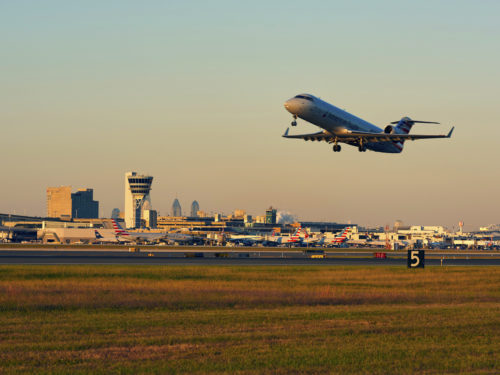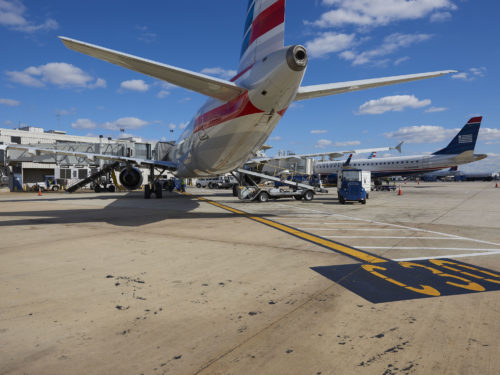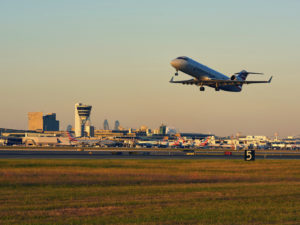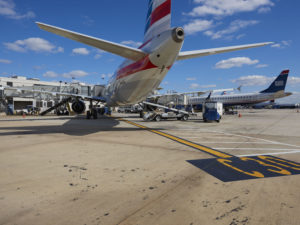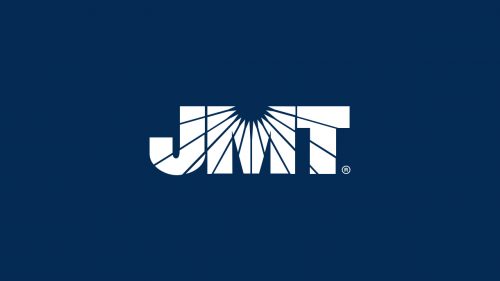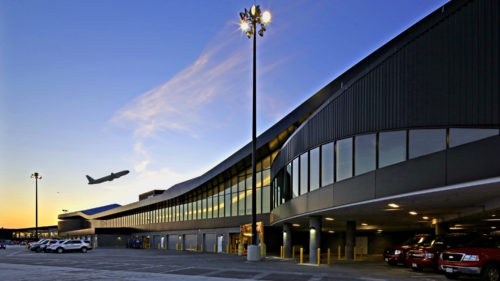On-Call Civil Engineering Services at Philadelphia International Airport
On-Call Civil Engineering Services at Philadelphia International Airport
JMT provided a broad range of civil engineering services for Philadelphia International (PHL) and Northeast Philadelphia (PNE) airports. Philadelphia International Airport is the nation’s ninth busiest airport, handling more than 30 million passengers per year within a small, tightly constrained physical footprint. Assignments included:
Runway 8-26 Repair Study: JMT performed a field study of the pavement settlement on Runway 8-26. The study reviewed the runway pavement above the box culvert that discharged treated effluent of the Southwest Treatment Plant to the Delaware River. A repair recommendation for the Runway pavement was successfully constructed, considering the initial construction features, the affected electrical components, and the PHL operations needs to maintain airfield efficiency.
Reconstruct Taxiways E and T at Taxiway K: Taxiways E and T, at their intersection with Taxiway K at PHL, underwent emergency repairs after rutting occurred. The rutting prevented queuing aircraft from powering through the distressed pavement lengths during taxi. JMT designed an immediate short-term fix, as well as a long-term solution, to prevent reoccurrence of the rutting. The short-term repair was performed promptly to return the pavement to service. A short-term repair option was developed that corrected the pavement ruts and could be performed in a narrow shutdown window.
While the short-term repairs took place, construction documents for the permanent repairs were developed. Design included pavement evaluation and rehabilitation, phasing coordination, electrical design, construction specifications, and a construction estimate. The final pavement design consisted of a full-depth pavement reconstruction with Portland Cement Concrete (PCC). The PCC pavement was placed in the keel section only. The remainder of the taxiway pavement width and intersection pavement received a two-inch mill-and-replace to repair surface distresses and restore the pavement around lighting and cable replacements.
North Apron Rehabilitation: The north apron is an approximate 230,000 SF aircraft parking area in the northeast quadrant of PHL. Airport operations utilizes this parking apron to stack remote overnight (RON) aircraft. It is critical during deicing season when the deicing apron, which is also used for RONs throughout the year, is dedicated to aircraft deicing. JMT was tasked with the preliminary and final design of the rehabilitation of north apron. The pavement exhibited various, severe distresses throughout the concrete and asphalt pavement that created potential issues. The preliminary design included several concepts that incorporated various budget options and pavement repair methods. Based on site investigations, pavement evaluations, record information review, and topographic survey efforts, JMT presented three options for rehabilitation. Increasing in construction budget, JMT proposed a superficial rehabilitation (asphalt surface mill and replace/concrete repairs), a substantial rehabilitation (asphalt mill and overlay, rubblization of concrete, and pavement strengthening), and a full-depth reconstruction (new concrete pavement). A full-depth reconstruction with concrete pavement was selected.
Pavement Repairs at PNE, Multiple Locations: JMT prepared design drawings and specifications to construct immediate repairs to Runway 15-33 and Taxiway L at PNE. These areas were dictated by the PNE airport manager for immediate repair. The work included a mill-and-pave repair for sporadic lengths of the Runway 15-33 longitudinal paving joints. Taxiway C at the Runway 33 end was repaved by removing the surface course lift, then placing P-401 material. More severe cracks along Taxiway L were also repaired.
Pavement Management System (PMS) Update: JMT updated the PMS program for PHL. The scope included a pavement condition index survey.
Tenant Design Reviews: JMT provided independent technical reviews of designs submitted to the Division of Aviation by both peer consultants and for PHL building permit applications. The reviews encompassed all disciplines including architecture, civil, mechanical, electrical, code and standards compliance, environmental permitting, and constructability review. Reviews to date have included the rental car area expansion at PHL, a rehabilitation of the PNE terminal apron, multiple design packages for the Terminal F expansion program, ticketing and baggage claim areas, and the American Flagship Lounge.
Salt Dome Replacement: JMT designed the replacement of the salt dome storage building, as well as a brine making system to diversify the PHL methods for snow event preparation. The existing salt dome had experienced a structural roof failure, and JMT designed a temporary repair to support the existing structure. Simultaneously, JMT designed the new salt dome facility, which accommodates 1,900 tons of material and allows tractor-trailer unloading inside the facility.
Fire Alarm Upgrade: JMT prepared drawings, specifications, and a cost estimate to replace and obsolete fire alarm panels with state-of-the-art Simplex Grinnell 4100ES fire alarm panels airport wide at PHL. Work included preparing phasing details to minimize the impact on airport operations during construction and to develop details for a manual fire watch to take the place of the fire alarm system when parts of the fire alarm system are out of service.
